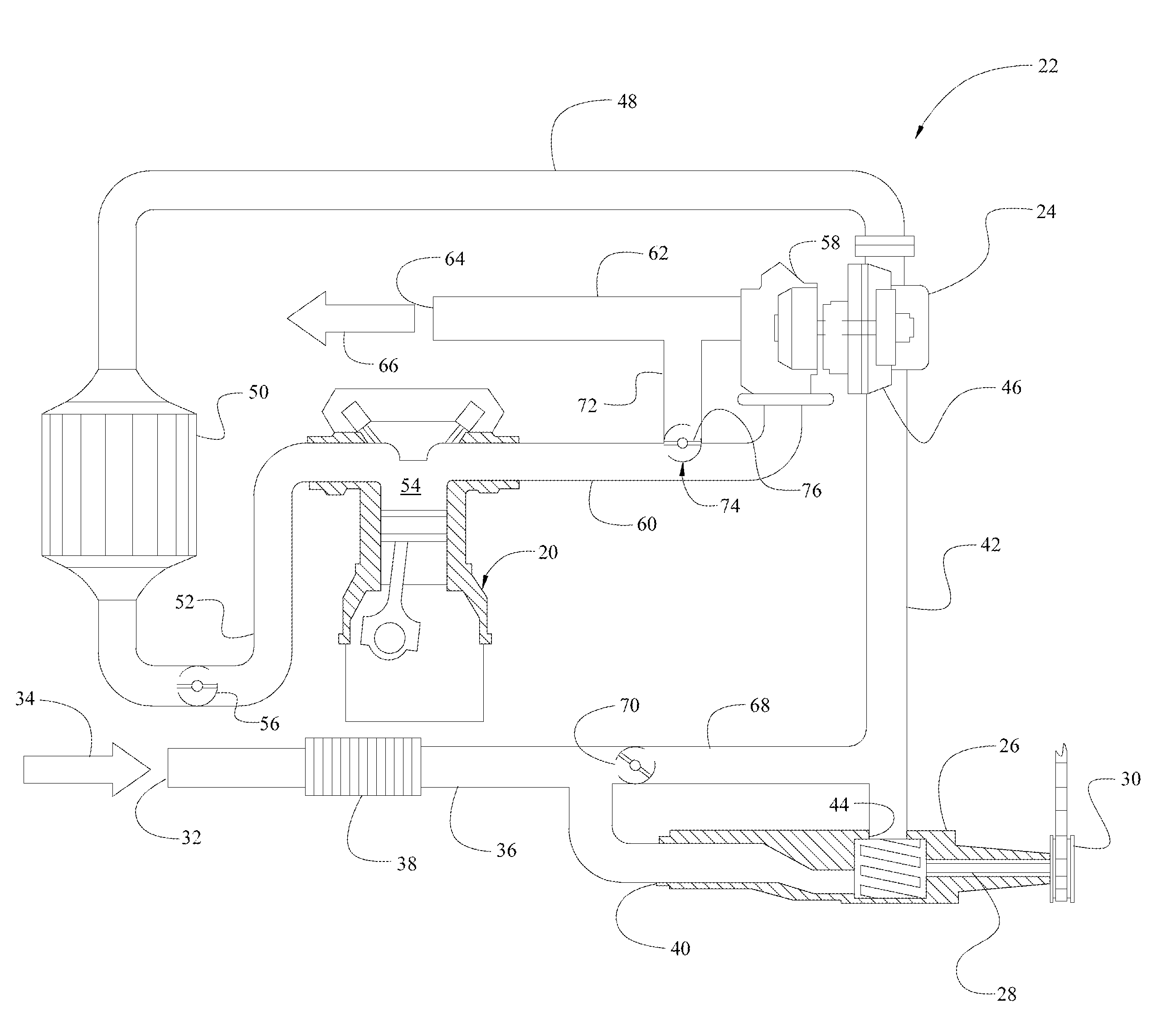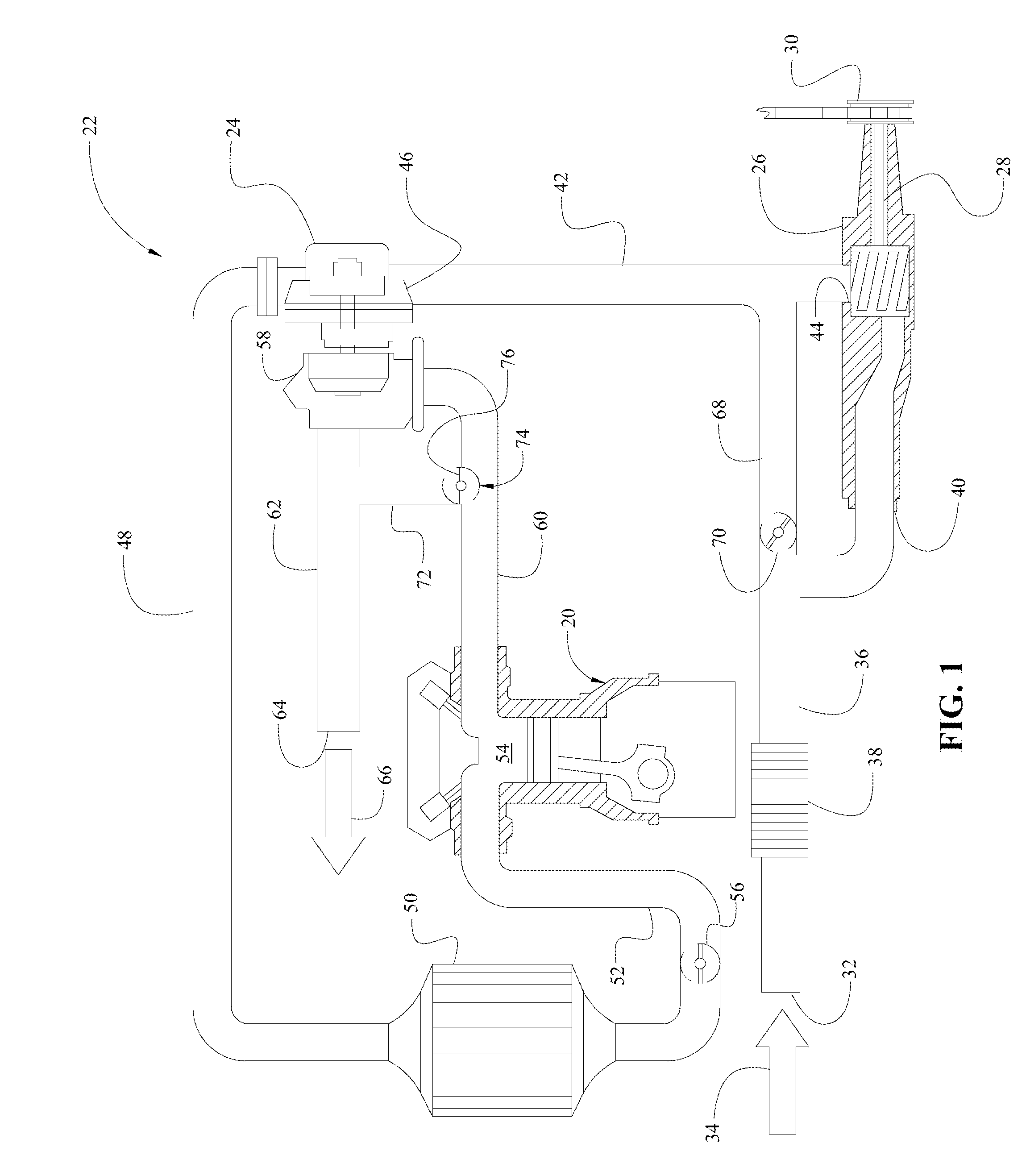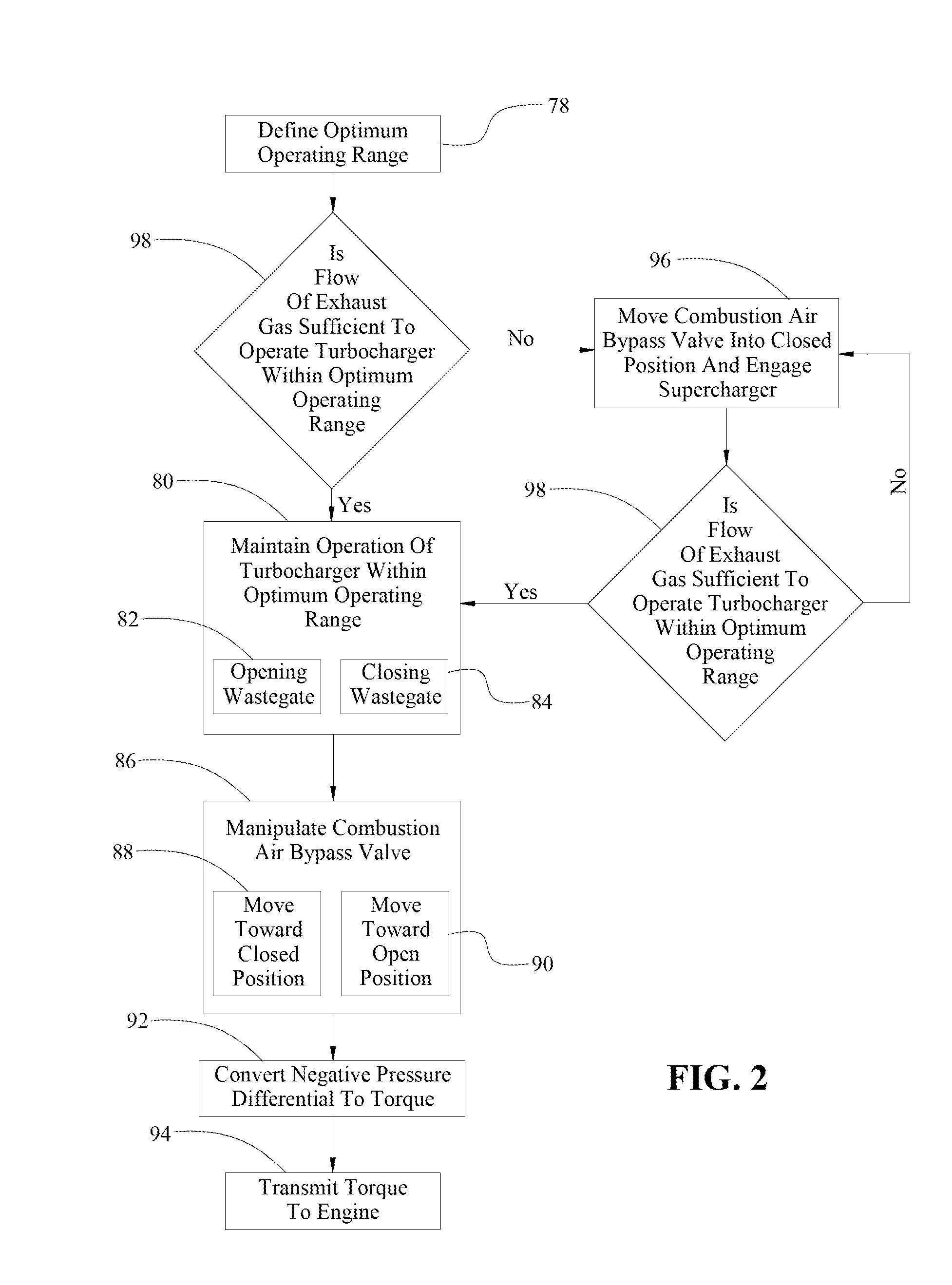Control Strategy for an Engine
a technology of control strategy and engine, which is applied in the direction of electric control, combustion engines, machines/engines, etc., can solve problems such as reducing engine efficiency, and achieve the effect of increasing engine operating efficiency and optimum operating rang
- Summary
- Abstract
- Description
- Claims
- Application Information
AI Technical Summary
Benefits of technology
Problems solved by technology
Method used
Image
Examples
Embodiment Construction
[0010]Referring to the Figures, wherein like numerals indicate corresponding parts throughout the several views, an internal combustion engine is shown generally at 20 in FIG. 1. The engine 20 includes a conventional engine, such as a diesel engine or a gasoline engine. As shown in FIG. 1, the engine 20 includes a “superturbo” boosting system 22, which includes both a turbocharger 24 and a supercharger 26 disposed sequentially in-line with each other to increase the boost, i.e., pressure, of combustion air of the engine 20.
[0011]The turbocharger 24 is powered by exhaust gas provided by the engine 20 as is well known. The supercharger 26 is mechanically linked to the engine 20, and is directly powered by the engine 20. The supercharger 26 includes a drive shaft 28 and a clutch 30 interconnecting the engine 20 and the drive shaft 28 of the supercharger 26. The clutch 30 is configured for selectively engaging and disengaging the supercharger 26. It should be understood by those skilled...
PUM
 Login to View More
Login to View More Abstract
Description
Claims
Application Information
 Login to View More
Login to View More - R&D
- Intellectual Property
- Life Sciences
- Materials
- Tech Scout
- Unparalleled Data Quality
- Higher Quality Content
- 60% Fewer Hallucinations
Browse by: Latest US Patents, China's latest patents, Technical Efficacy Thesaurus, Application Domain, Technology Topic, Popular Technical Reports.
© 2025 PatSnap. All rights reserved.Legal|Privacy policy|Modern Slavery Act Transparency Statement|Sitemap|About US| Contact US: help@patsnap.com



